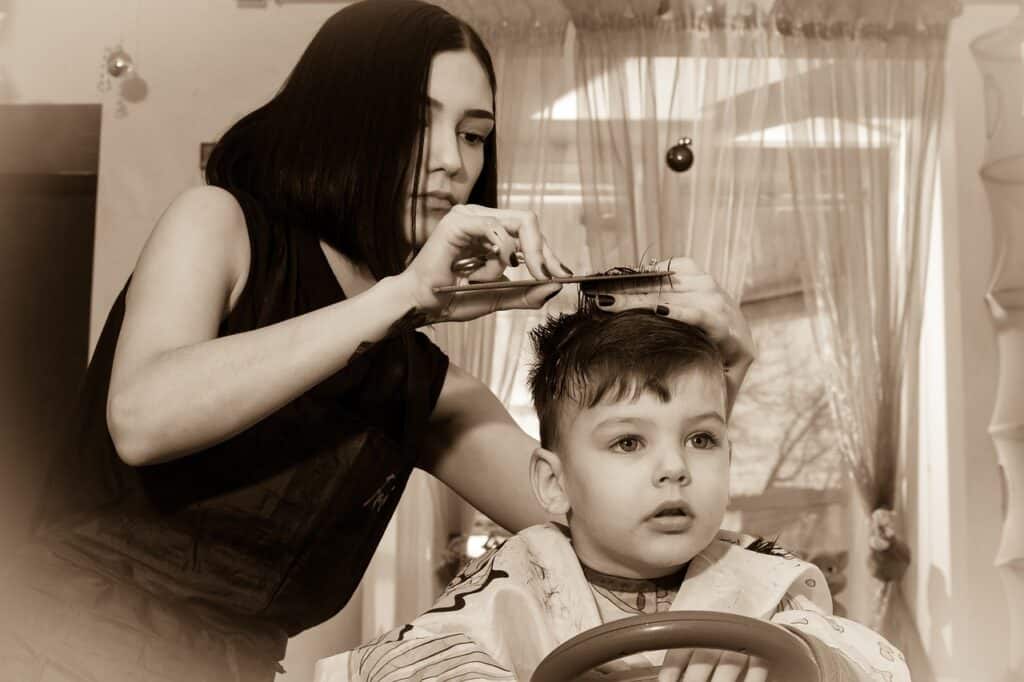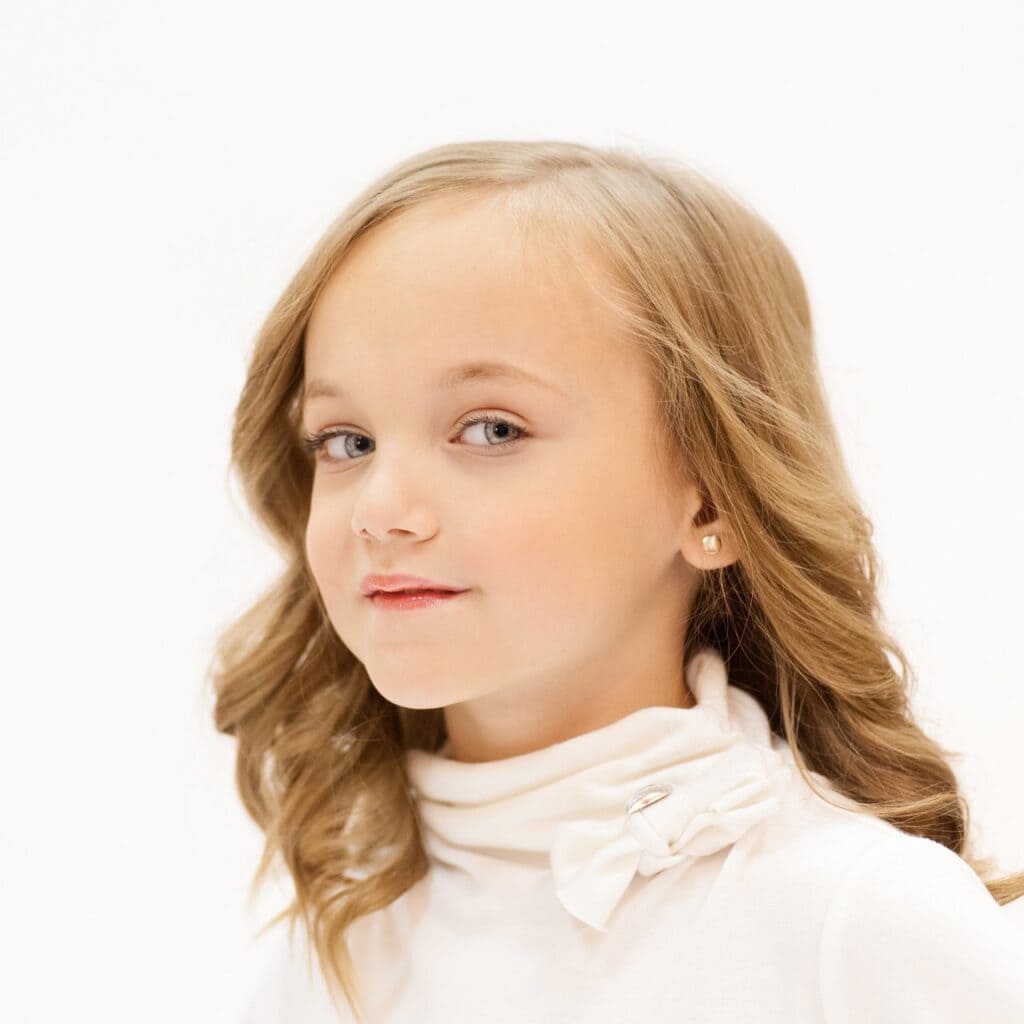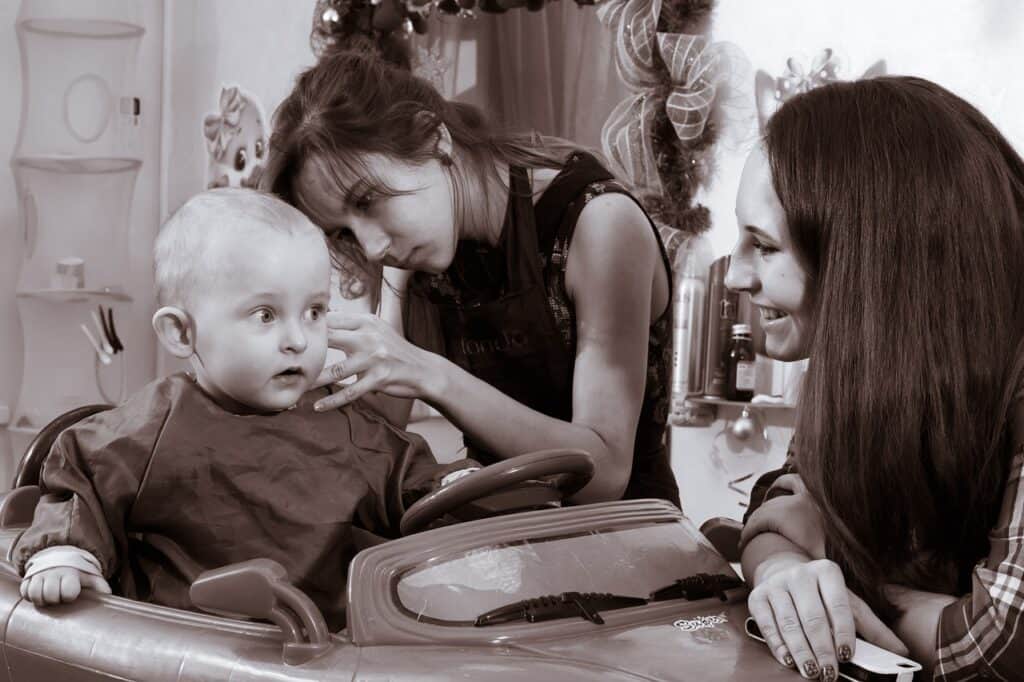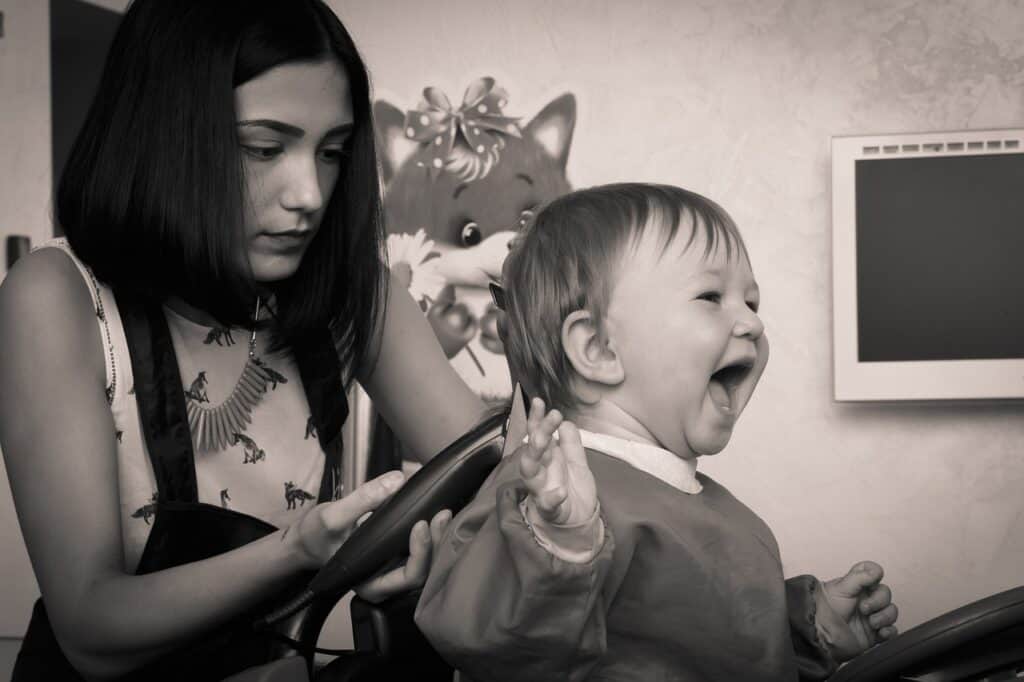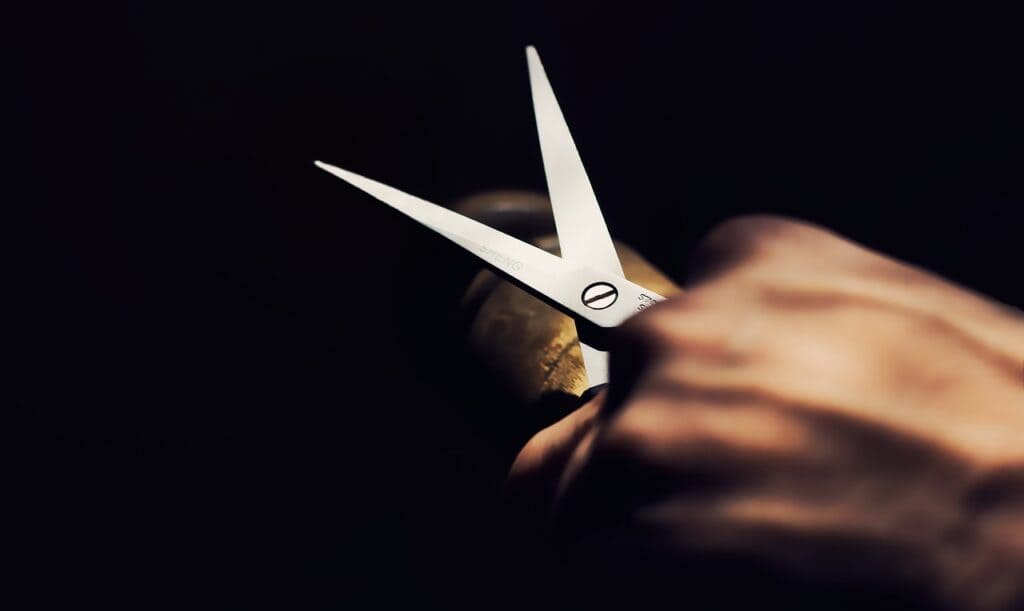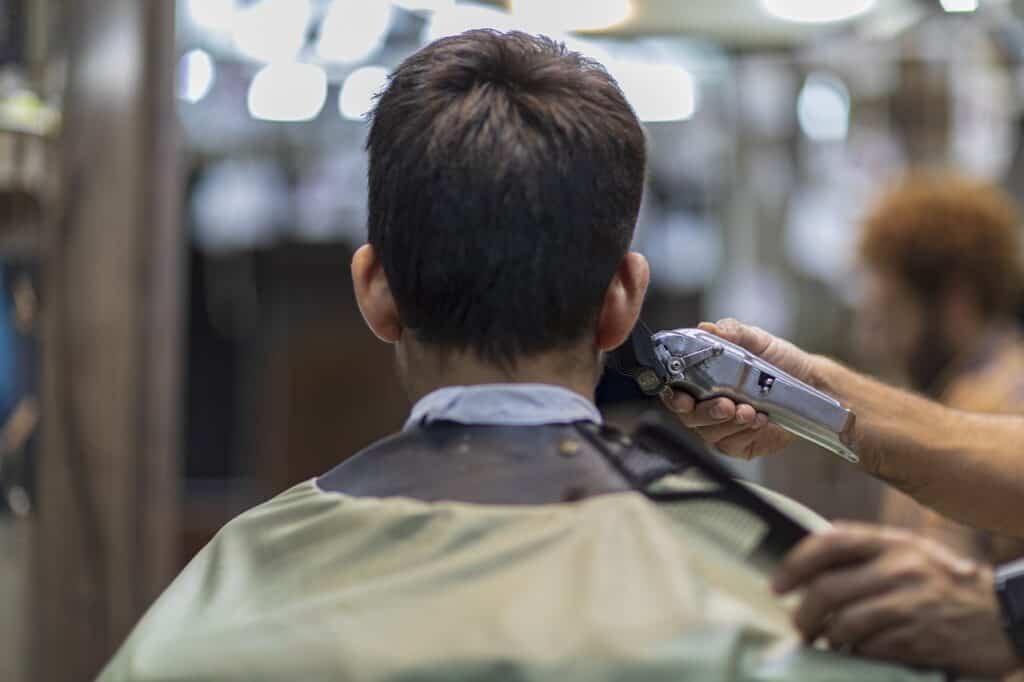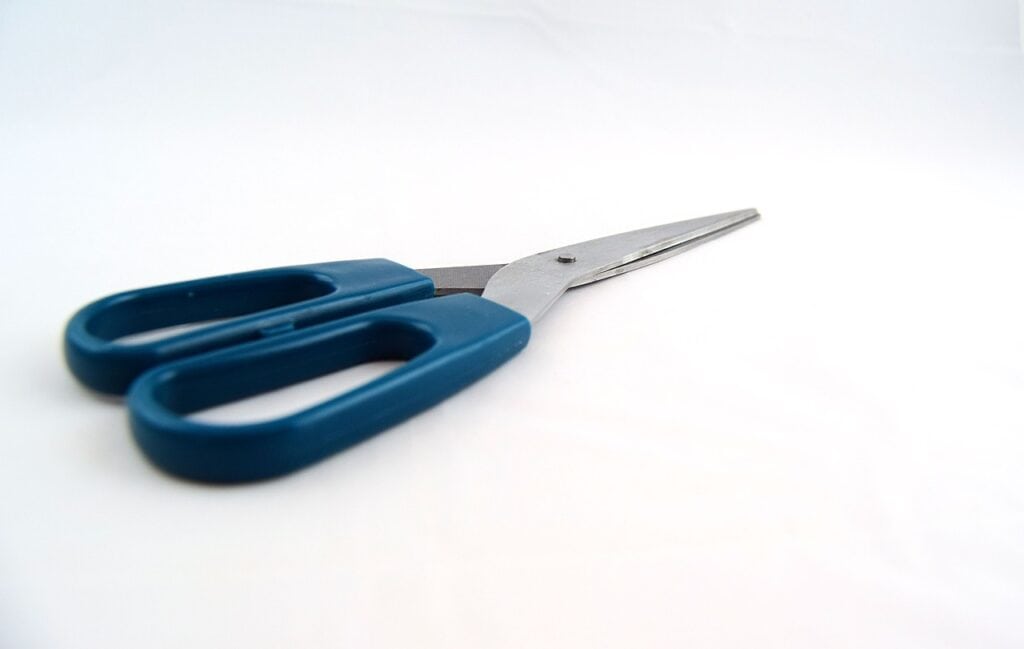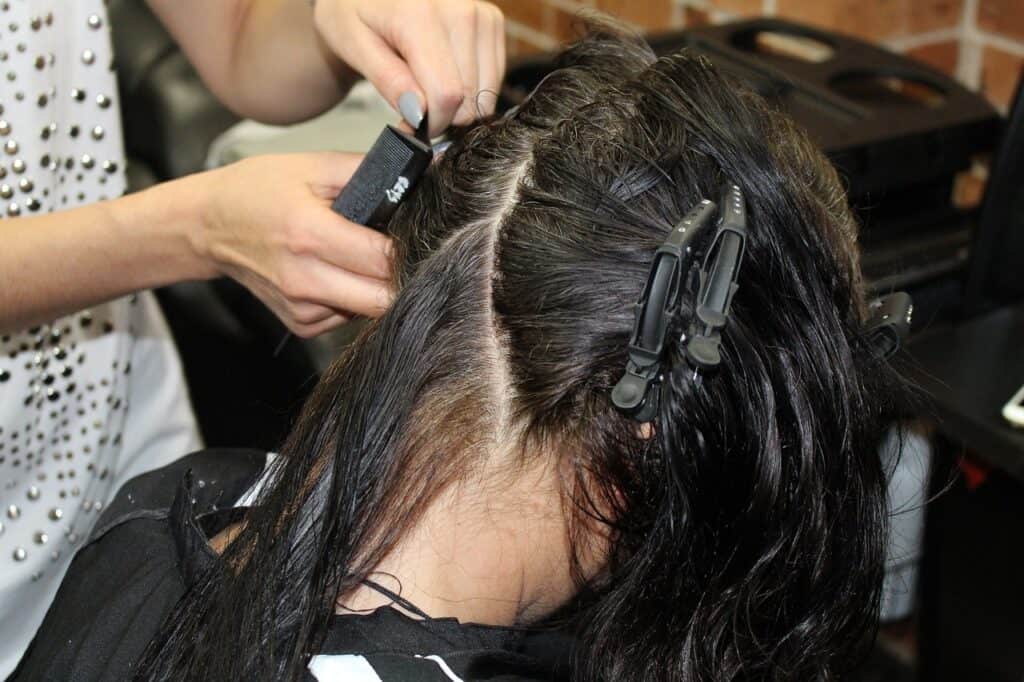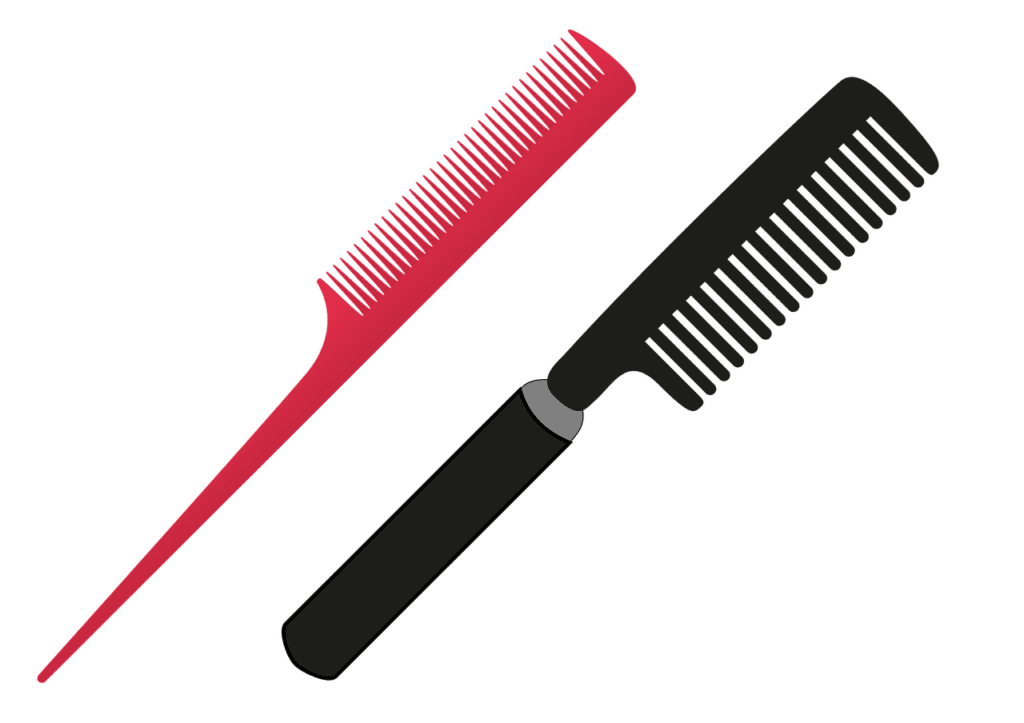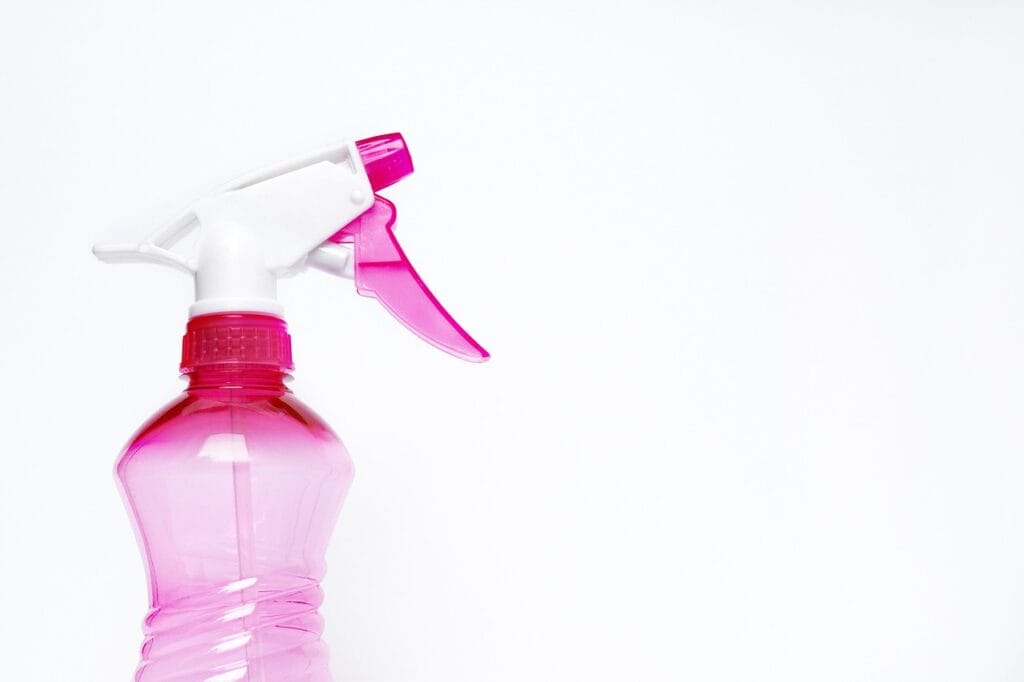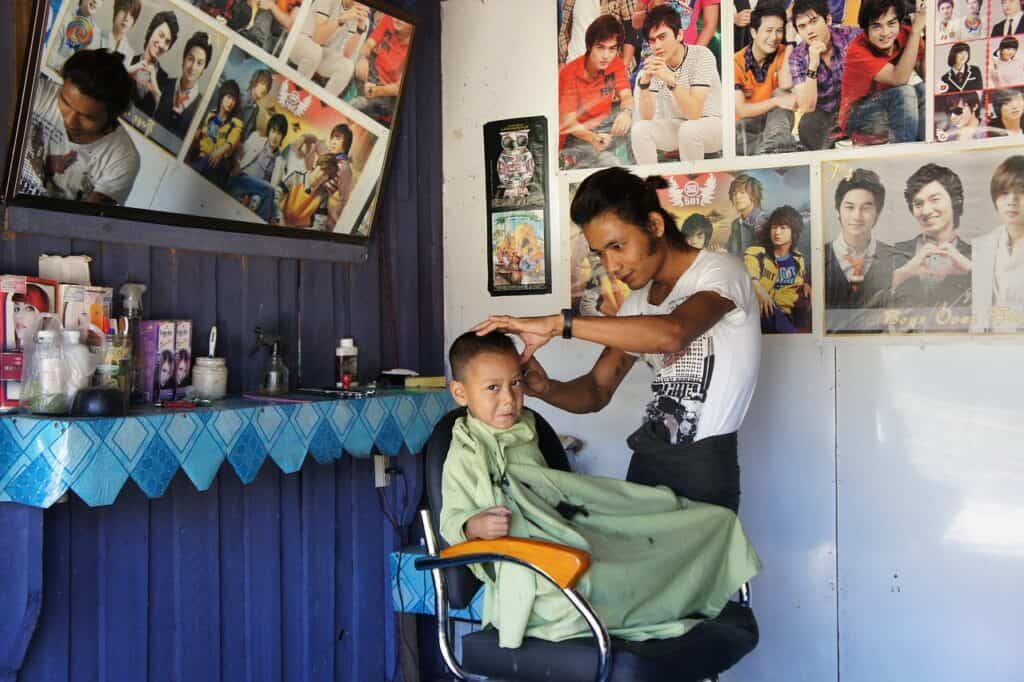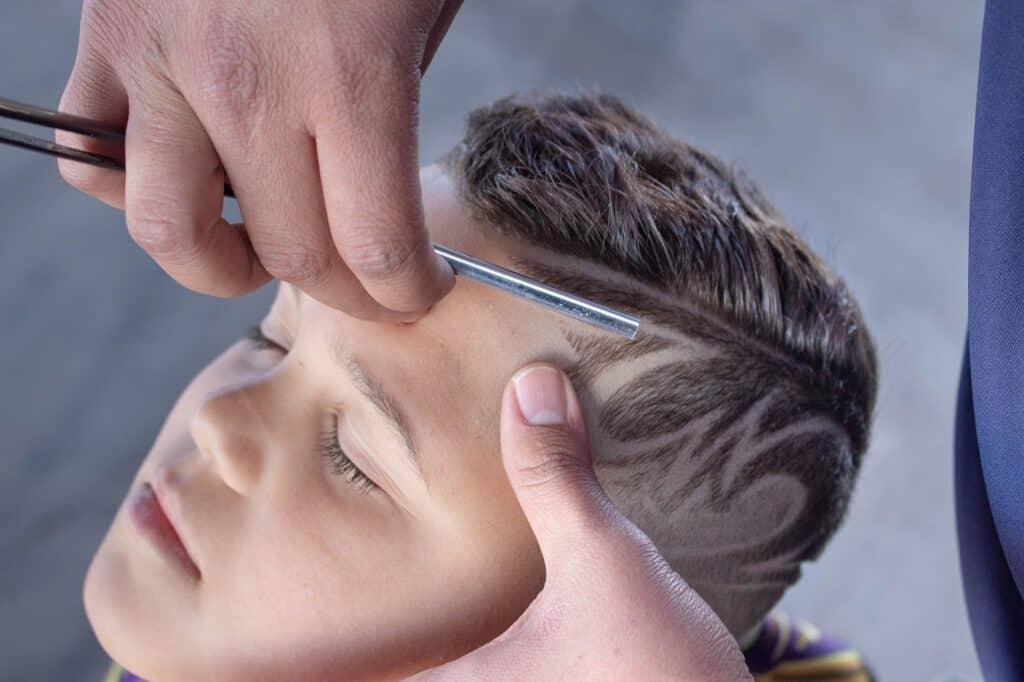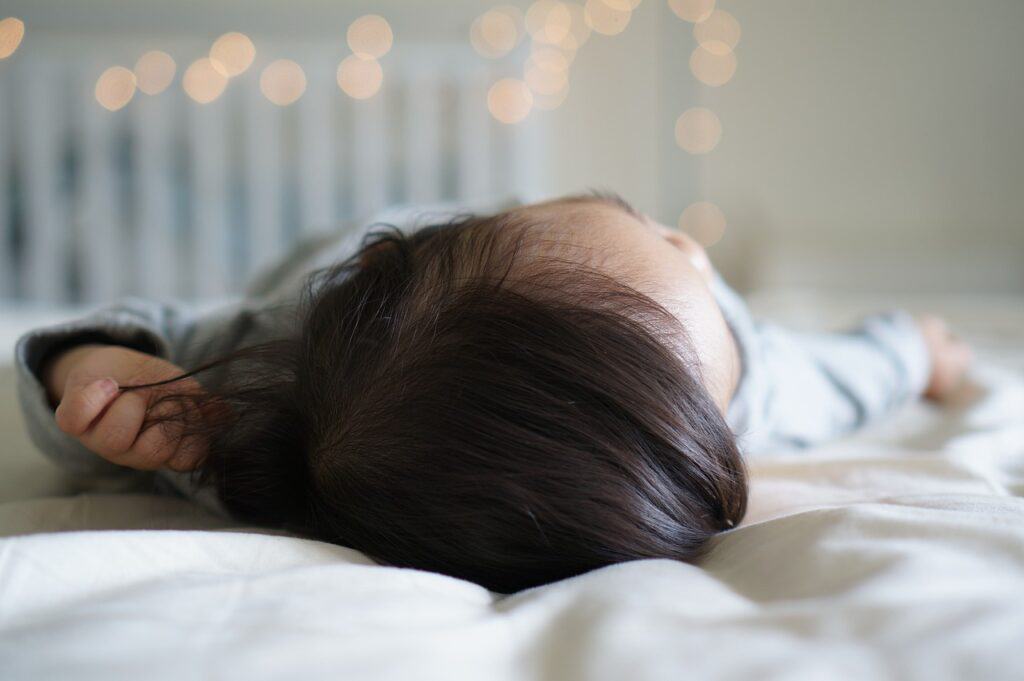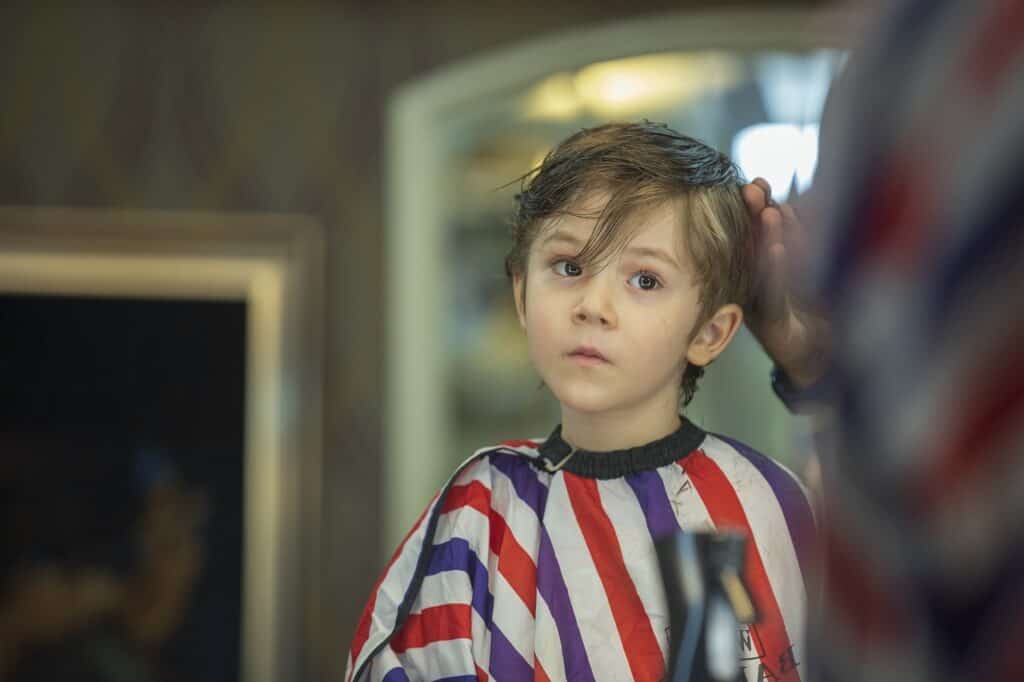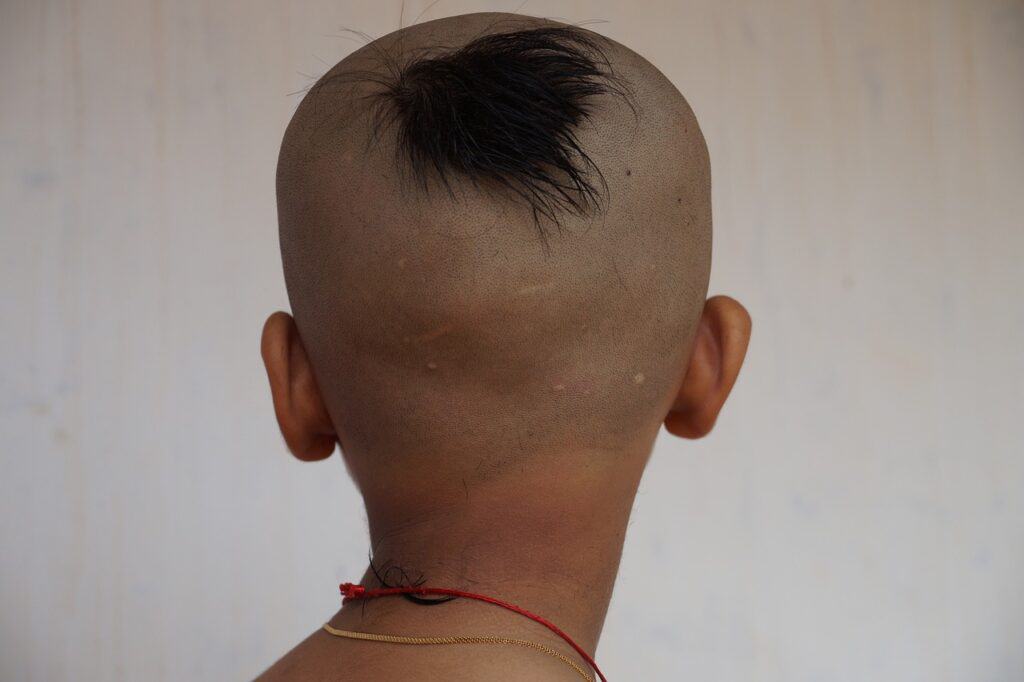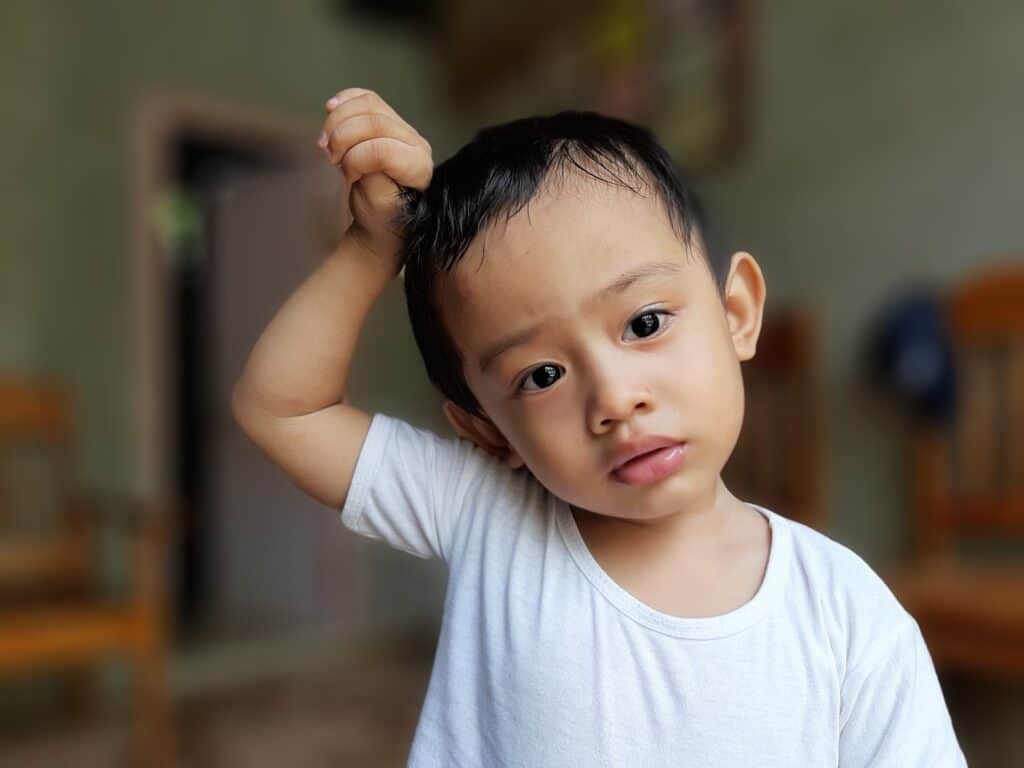Cutting a baby’s hair is a significant moment for many parents. It marks the transition from infancy to toddlerhood and is often accompanied by mixed emotions. While some parents eagerly anticipate their baby’s first haircut, others may feel nervous or hesitant about the process.
Regardless of how you feel, it’s essential to understand when it’s appropriate to cut your baby’s hair and how to prepare for the experience.
Babies’ hair grows at different rates, and the texture can vary widely. Some babies are born with a full head of hair, while others may have very little hair at birth.
Hair growth typically slows down after the first six months, and many babies experience a period of hair loss or thinning around three to six months of age. By the time your baby is a year old, they may have a full head of hair or just a few wispy strands.
Understanding your baby’s hair growth pattern can help you determine when it’s time for their first haircut.
Key Takeaways
- Baby’s hair grows at different rates and textures.
- Hair growth slows down after the first six months.
- Understanding your baby’s hair growth pattern can help determine when it’s time for their first haircut.
Understanding Baby’s Hair Growth
Babies are born with varying amounts of hair on their heads. Some have a full head of hair while others are born bald. However, regardless of the amount of hair they are born with, all babies will experience hair growth in the first few months of their lives.
Baby hair growth is a natural process that occurs as a result of the hair follicles in the scalp producing new hair. The rate of hair growth varies from baby to baby, but on average, babies can grow up to half an inch of hair per month.
Newborn hair is typically fine and soft, and it may fall out within the first few weeks of life. This is known as “shedding,” and it is a normal part of the hair growth cycle. After shedding, new hair will grow in its place.
It is important to note that baby hair growth may be uneven. Some babies may have hair that grows faster in certain areas than in others, resulting in an uneven or patchy appearance.
This is also normal and typically resolves on its own over time.
Parents may wonder when it is safe to cut their baby’s hair. While there is no specific age at which it is recommended to cut a baby’s hair, many parents choose to wait until their baby’s hair is longer and more noticeable before having it cut.
In summary, baby hair growth is a natural process that occurs as a result of the hair follicles in the scalp producing new hair. Newborn hair is typically fine and soft, and it may fall out within the first few weeks of life.
Baby hair growth may be uneven, but this is normal and typically resolves on its own over time.
When to Consider a First Haircut
Baby’s first haircut is a milestone that many parents look forward to. However, it’s important to know when to consider giving your baby their first haircut.
The timing of a baby’s first haircut can vary depending on the child’s hair growth and texture. Some babies are born with a full head of hair, while others may not have much hair until several months after birth.
Experts suggest waiting until a baby is at least 12 months old before considering their first haircut. This is because the hair needs time to grow and develop its natural texture. Cutting the hair too early can result in an uneven or choppy appearance.
However, if the baby’s hair is getting in their eyes or causing discomfort, it may be necessary to trim the hair before their first birthday. In this case, it’s best to consult with a professional stylist who has experience working with young children.
Overall, it’s important to approach a baby’s first haircut with patience and care. This milestone is a special moment for both parents and child, and it’s important to make it a positive experience.
Preparing for the Haircut
Before cutting a baby’s hair, it is important to prepare properly to ensure a successful and safe experience. Parents should gather all necessary supplies and create a comfortable environment for their baby.
One important aspect of preparation is creating a distraction-free environment. This can be achieved by choosing a quiet and well-lit room, where the baby can sit in a high chair or on a parent’s lap. A mirror can be placed in front of the baby to help them see what is happening and make them feel more comfortable.
To protect the baby’s clothing, a plastic cape or towel can be placed over them. Parents should also ensure that they have all necessary supplies, such as a comb, scissors, and hair clips, within reach before beginning the haircut.
It is important to note that babies may not be able to sit still for long periods of time, so parents should be prepared to take breaks as needed. Additionally, parents should ensure that their baby is in a good mood and well-rested before beginning the haircut to minimize discomfort or fussiness.
By taking the time to prepare properly, parents can help ensure a successful and stress-free haircut for their baby.
Choosing the Right Tools
When it comes to cutting a baby’s hair, choosing the right tools is essential. The right tools can make the process easier and safer for both the baby and the parent. Here are some tools that can be used for cutting a baby’s hair:
Scissors
Scissors are one of the most common tools used for cutting a baby’s hair. When choosing scissors, it is important to select a pair that is small and sharp. Blunt scissors can pull on the baby’s hair, causing discomfort and making the process more difficult.
It is also important to choose scissors with rounded tips, as this can help prevent accidental cuts.
Clippers
Clippers are another tool that can be used for cutting a baby’s hair. They are especially useful for trimming the hair around the ears and back of the neck.
When using clippers, it is important to choose a model that is specifically designed for babies, as adult clippers can be too powerful and cause discomfort.
Sharp Scissors
Sharp scissors are essential for cutting a baby’s hair. Dull scissors can cause discomfort and make the process more difficult. It is also important to select scissors with rounded tips, as this can help prevent accidental cuts.
Hair Clips
Hair clips can be used to hold the baby’s hair in place while cutting. They can also be used to section off the hair, making it easier to work with. When choosing hair clips, it is important to select ones that are gentle on the baby’s hair and scalp.
Comb
A comb is essential for cutting a baby’s hair. It can be used to detangle the hair and to help guide the scissors or clippers. When choosing a comb, it is important to select one that is gentle on the baby’s hair and scalp.
Spray Bottle
A spray bottle can be used to dampen the baby’s hair before cutting. This can make the hair easier to work with and can help prevent flyaways.
When choosing a spray bottle, it is important to select one that produces a fine mist, as this can help prevent the baby from getting too wet.
Overall, choosing the right tools is essential for cutting a baby’s hair. It is important to select tools that are gentle on the baby’s hair and scalp, and that make the process easier and safer for both the baby and the parent.
Cutting Baby’s Hair at Home
Many parents prefer to cut their baby’s hair at home instead of going to a salon. This can be a cost-effective option and also allows parents to have more control over the process.
However, it is important to follow some guidelines to ensure that the process is safe and effective.
Before starting, make sure that your baby is in a comfortable position. You may want to use a high chair or have someone hold your baby securely.
It is also important to have all the necessary tools, such as scissors and a comb, within reach.
When cutting your baby’s hair, it is best to start with small snips rather than trying to trim large sections at once. This will help prevent accidentally cutting too much hair.
It is also important to use sharp scissors that are specifically designed for cutting hair. Dull scissors can cause hair to be pulled or torn, which can be painful for your baby.
To make the process easier, you may want to dampen your baby’s hair with a spray bottle of water. This will help the hair lay flat and make it easier to cut.
You may also want to use a buffer, such as a towel or blanket, to protect your baby’s skin from the scissors.
When deciding on a style, keep in mind that your baby’s hair may grow unevenly for the first few months. It is best to stick with simple styles that do not require a lot of precision.
You can always visit a salon for a more complex style once your baby’s hair has grown out more.
Finally, consider saving a lock of hair as a keepsake. This can be a special memento of your baby’s first haircut that you can treasure for years to come.
Overall, cutting your baby’s hair at home can be a safe and effective option as long as you follow the necessary guidelines.
Taking Baby to a Salon or Barber
When it comes to cutting a baby’s hair, parents may opt to take their baby to a salon or barber. This can be a good option for parents who do not feel comfortable cutting their baby’s hair themselves or who want a professional to handle the task.
Salons and barbershops are typically equipped to handle children of all ages, including babies. Some salons even specialize in children’s haircuts and offer a more kid-friendly environment.
These children’s salons may have toys or other distractions to keep babies and children entertained during the haircut.
Parents should look for a salon or barber who has experience cutting children’s hair. It is important to find a professional who is patient and gentle with babies and who can work quickly to minimize the amount of time the baby spends in the chair.
When taking a baby to a salon or barber, parents should also be prepared to bring any necessary items, such as a change of clothes or a pacifier, to keep the baby calm and comfortable during the haircut. Additionally, parents should communicate any specific instructions or preferences to the stylist or barber before the haircut begins.
Overall, taking a baby to a salon or barber can be a good option for parents who want a professional to handle the task of cutting their baby’s hair. By finding a skilled and experienced stylist or barber, parents can ensure that their baby’s haircut is done quickly, safely, and with minimal stress.
Keeping Baby Comfortable and Happy
Cutting a baby’s hair can be a daunting task, but with the right approach, it can be a positive experience for both the baby and the parents. Keeping the baby comfortable and happy during the haircut is crucial for a successful outcome.
Distraction is key when it comes to keeping a baby calm during a haircut. Parents can use different techniques to distract the baby, such as singing, playing with toys, or making funny faces. Providing a positive experience for the baby will help them associate haircuts with happy memories, making future haircuts easier.
Reinforcement is also important during a baby’s haircut. Parents can reward the baby with positive reinforcement, such as a small treat or a toy, for sitting still and cooperating during the haircut. This will encourage the baby to continue behaving well during future haircuts.
Parents should also ensure that the baby is comfortable during the haircut. Using a comfortable chair or booster seat can help the baby feel secure and safe.
Additionally, using a soft and gentle brush or comb can help avoid any discomfort or pain during the haircut.
In summary, keeping a baby comfortable and happy during a haircut is essential for both the baby and the parents. Using distractions, positive reinforcement, and ensuring the baby’s comfort can make the haircut a positive experience for everyone involved.
Dealing with Potential Challenges
Cutting a baby’s hair can be a challenging task, especially if the baby is young and not used to the process. Some babies may cry or become apprehensive during the haircutting process. As a parent, there are a few things you can do to make the process smoother.
Firstly, it is important to ensure that the baby is well-rested and fed before the haircutting process begins. A hungry or tired baby is more likely to be fussy during the haircut, which can make the process more challenging.
Secondly, parents can try to distract the baby during the haircutting process. This can be done by playing with toys or singing songs. The goal is to keep the baby entertained and distracted from the haircutting process.
Thirdly, parents can try to make the baby feel comfortable by holding them close during the haircutting process. This can help to reassure the baby and make them feel more secure.
It is also important to be aware of stranger anxiety, which is common in babies around the age when they may need their first haircut. Parents can help by introducing the baby to the hairdresser or barber beforehand so that they become familiar with them.
In summary, cutting a baby’s hair can be a challenging task, but with the right preparation and approach, it can be made easier. Parents should ensure that the baby is well-rested and fed, try to distract them during the process, make them feel comfortable, and be aware of stranger anxiety.
Post-Haircut Care and Maintenance
After cutting a baby’s hair, it is important to take care of the hair to ensure that it grows back healthy and strong. Here are some tips on how to care for and maintain a baby’s hair after a haircut:
-
Gentle Cleansing: Use a gentle baby shampoo to wash the hair. Avoid using adult shampoos as they can be too harsh for a baby’s delicate scalp. Be sure to rinse the hair thoroughly to remove all shampoo residue.
-
Moisturize: After washing the hair, apply a gentle baby conditioner to keep the hair moisturized. This is especially important for babies with thicker or curly hair. For babies with cradle cap, a gentle scalp oil can help to moisturize and soothe the scalp.
-
Avoid Shaving: It is not recommended to shave a baby’s hair, as it can damage the hair follicles and cause the hair to grow back unevenly. Instead, opt for a gentle trim to maintain the hair’s shape and style.
-
Manage Curls: For babies with curly hair, use a wide-toothed comb or your fingers to detangle the hair. Avoid using brushes, as they can cause the hair to break and frizz. Use a leave-in conditioner or curl cream to define and enhance the curls.
-
Trim the Nape of the Neck: To keep the hair looking neat and tidy, trim the hair at the nape of the neck every few weeks. This will prevent the hair from getting too long and tangled.
-
Consider a Bob: For babies with longer hair, a bob haircut can be a cute and practical option. A bob is easy to maintain and can be styled in a variety of ways.
By following these tips, parents can help their baby’s hair to grow healthy and strong after a haircut.
Creating Memories of the First Haircut
The first haircut of a baby is an exciting milestone for both parents and the child. It is a moment that is often captured in photos and videos, and even saved as a lock of hair for memories.
Here are some tips for creating a memorable experience for the first haircut:
-
Choose a special day: Pick a day when the baby is well-rested and in a good mood. This will make the experience more enjoyable for everyone involved.
-
Make it a surprise: To make the first haircut more exciting, parents can surprise the baby with a special outfit or toy to distract them during the haircut.
-
Capture the moment: Take photos or videos of the baby’s first haircut. This will be a great memory to look back on in the future.
-
Save a lock of hair: Some parents like to save a lock of hair from the first haircut as a keepsake. This can be stored in a special box or frame.
Overall, the first haircut is a special moment that should be enjoyed and cherished. By following these tips, parents can create a memorable experience for both themselves and their child.
Frequently Asked Questions
At what age is it safe to cut a baby’s hair?
There is no specific age at which it is safe to cut a baby’s hair. However, most experts recommend waiting until the baby is at least 6 months old. This is because the baby’s hair is still delicate and cutting it too early may cause damage to the hair follicles.
What is the best way to cut a baby’s hair?
The best way to cut a baby’s hair is to use a pair of scissors designed specifically for babies. These scissors are small and have rounded tips to prevent accidental cuts. It is important to cut the hair slowly and carefully, making sure to avoid the baby’s ears and eyes.
Can cutting a baby’s hair make it grow faster?
Cutting a baby’s hair does not make it grow faster. Hair growth is determined by genetics and other factors such as nutrition and overall health.
What are some tips for cutting a baby boy’s hair?
When cutting a baby boy’s hair, it is important to use clippers or scissors with a guard to prevent accidental cuts. Begin by cutting the sides and back of the head, and then move to the top. It is important to keep the hair longer on top to create a more natural look.
How do you cut a baby girl’s hair?
When cutting a baby girl’s hair, it is important to use sharp scissors to prevent split ends. Begin by parting the hair down the middle and cutting the hair on each side. It is important to keep the hair longer on top to create a more natural look.
What are some ideas for a baby’s first haircut keepsake?
Some ideas for a baby’s first haircut keepsake include saving a lock of hair in a special box or frame, taking a photo of the baby before and after the haircut, and creating a scrapbook page with the baby’s hair clippings and a photo.

Iesha is a loving mother of 2 beautiful children. She’s an active parent who enjoys indoor and outdoor adventures with her family. Her mission is to share practical and realistic parenting advice to help the parenting community becoming stronger.

